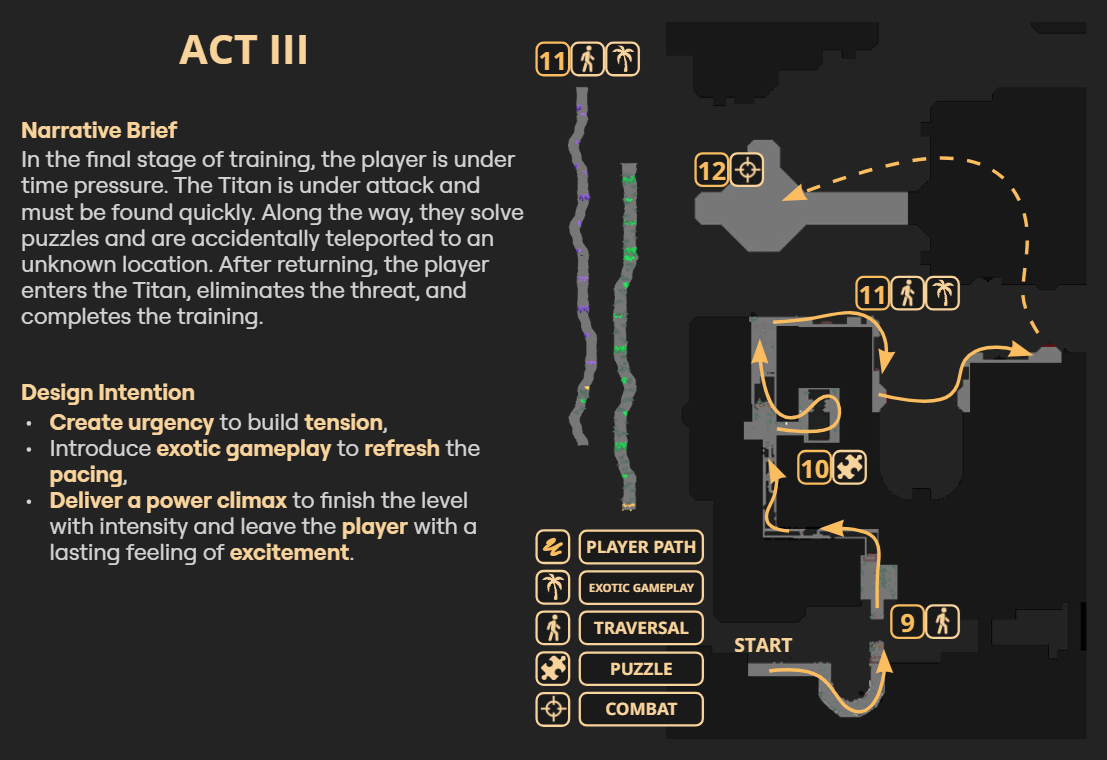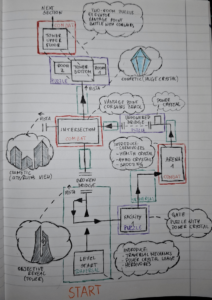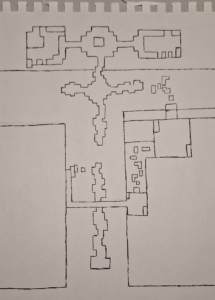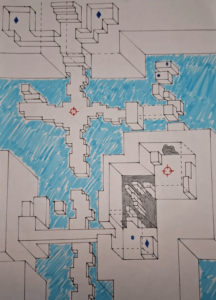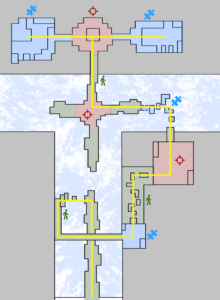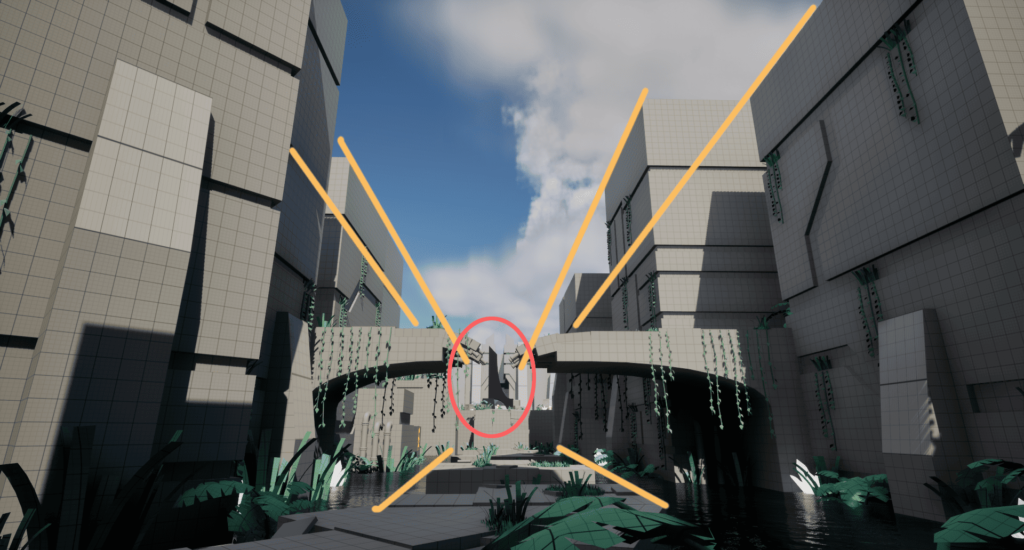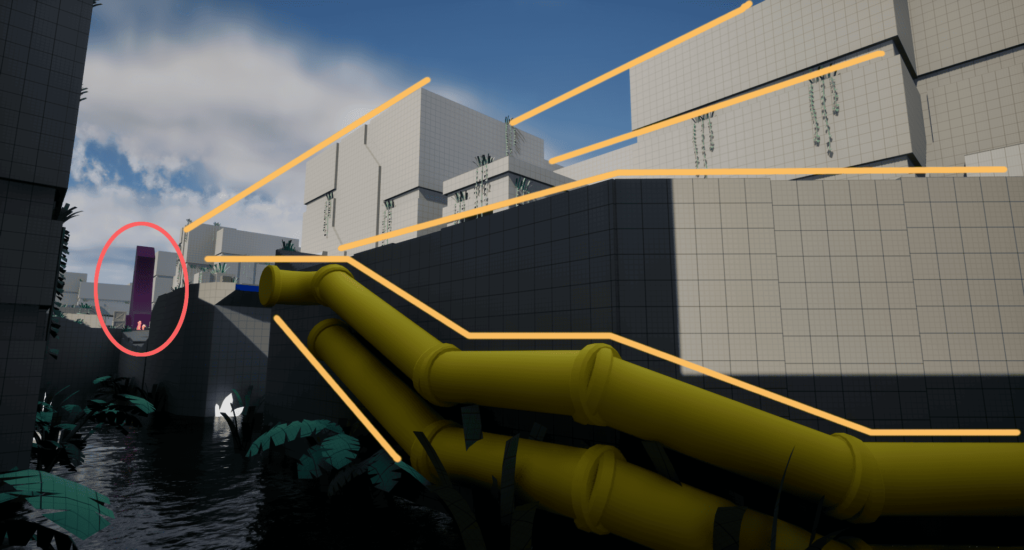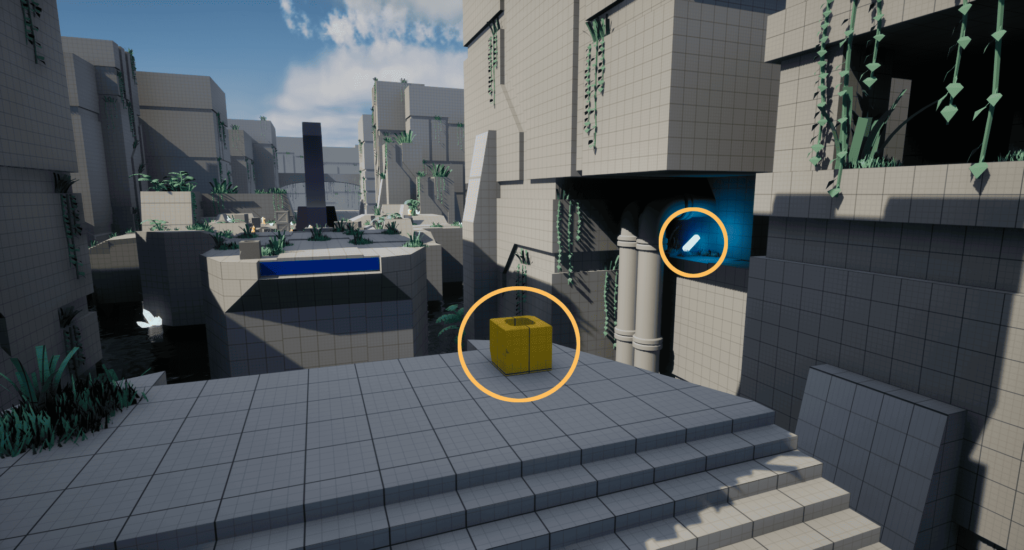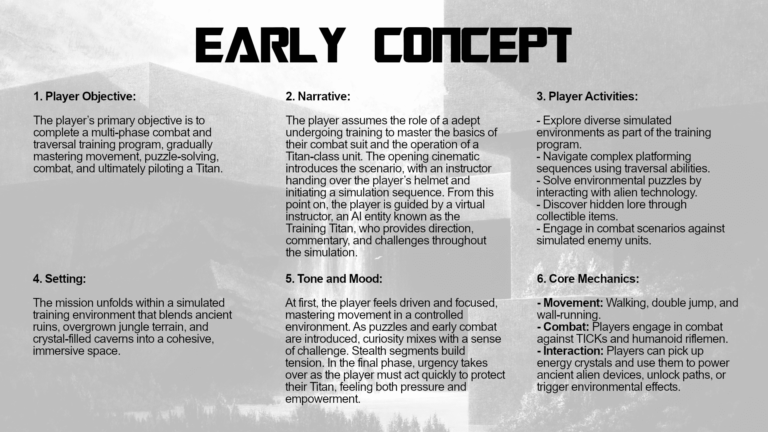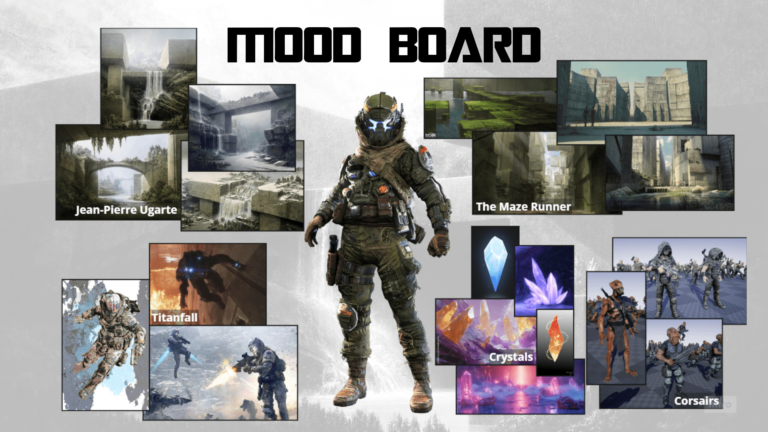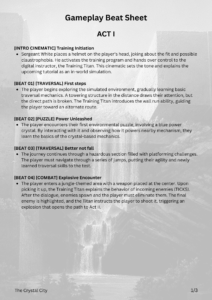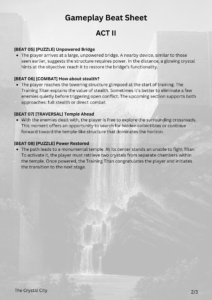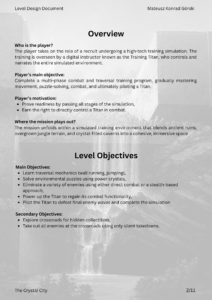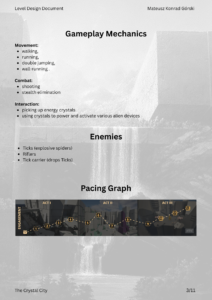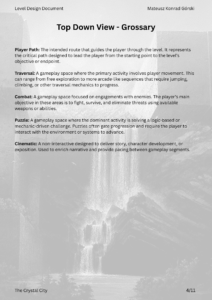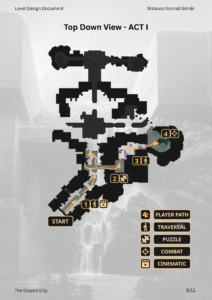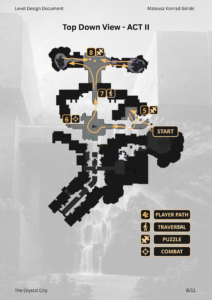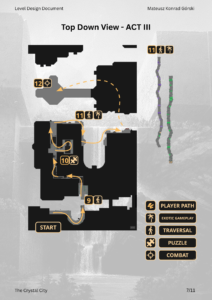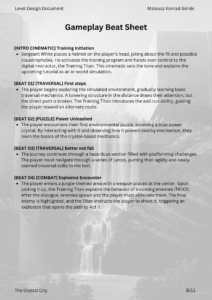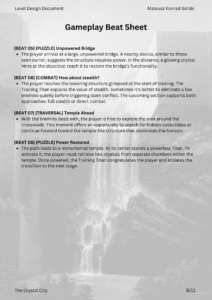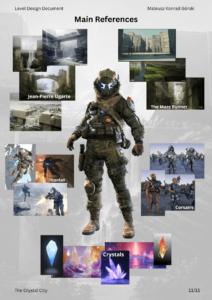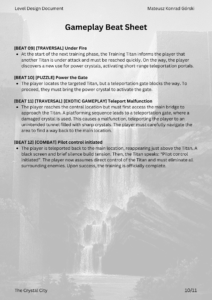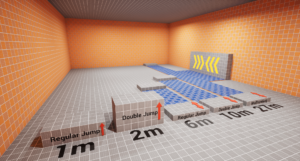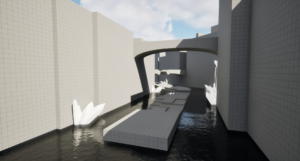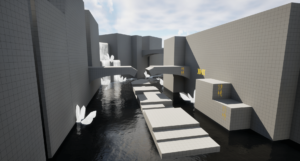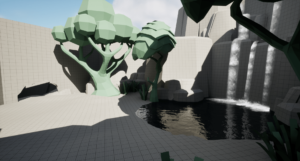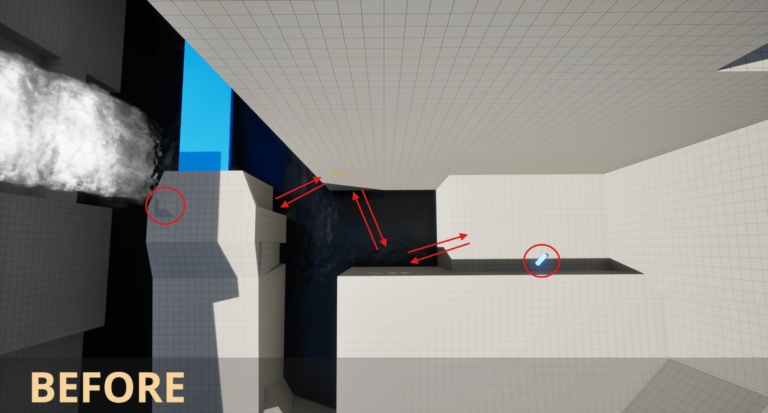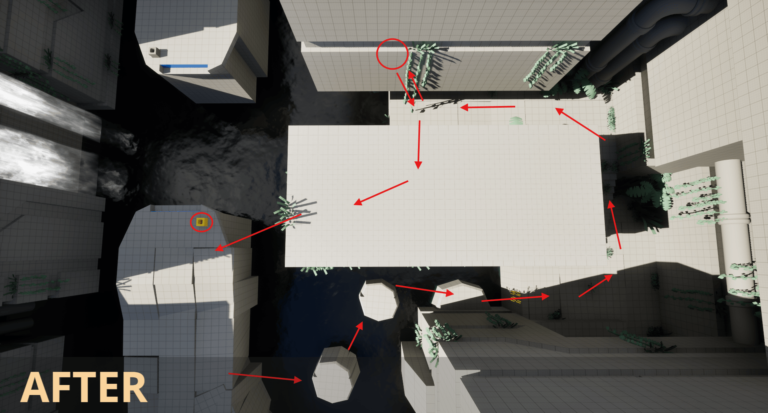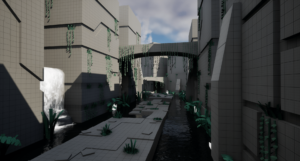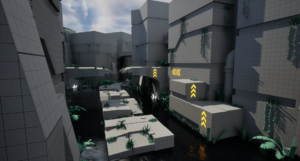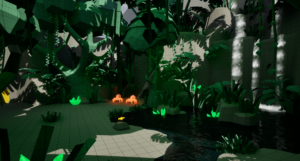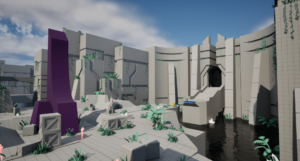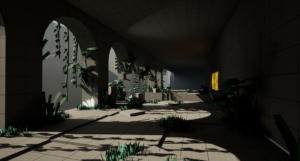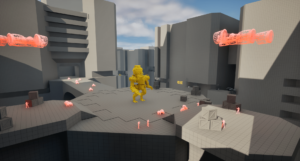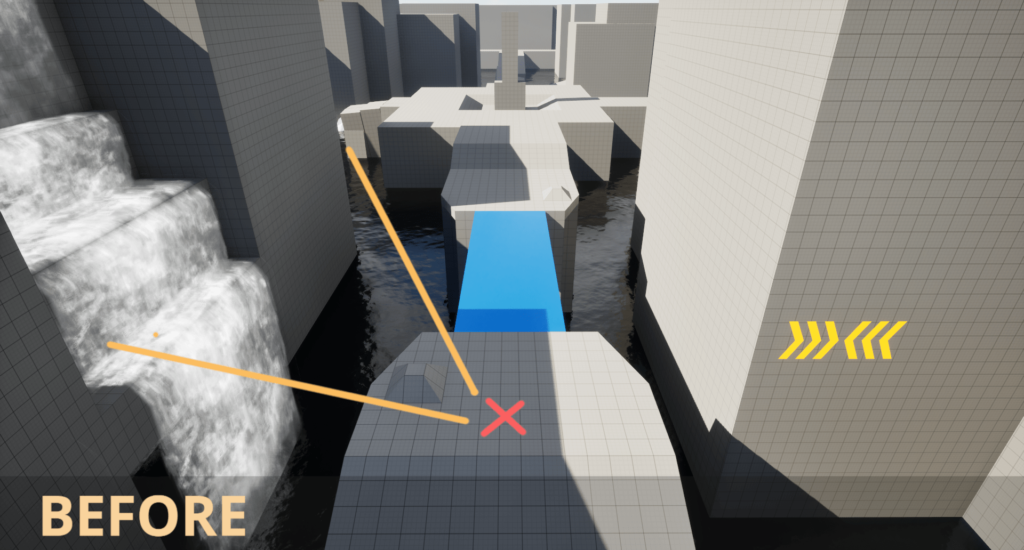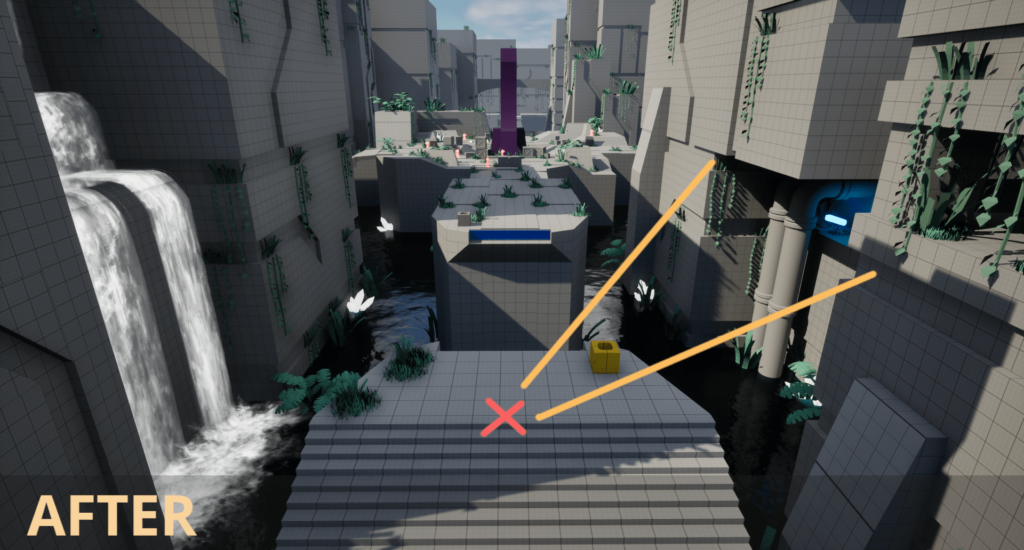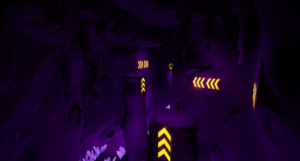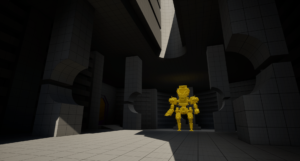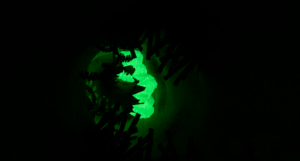The Crystal City
Genre: FPS shooter / PvE
Type: Blockout
Engine: Unreal Engine 5
Tools: UE Blueprints, Level Design Kit, Blockout Tools Plugin,
Playtests: 6
Iterations: 8
Role: Level designer
Navigate to
Navigate to
Intro
What if Titanfall met The Maze Runner in a surreal world inspired by the paintings of Jean-Pierre Ugarte?
After experiencing their energy, scale, and atmosphere, I grew curious:
What would happen if these worlds collided? That question became the creative spark for this level.
Additionally I focused on improving my rapid prototyping and iterative design skills through playtest-driven feedback.
To build strong habits, I joined Mike Madden’s bootcamp at Game Design Skills, which emphasized blockout, playtesting, and narrative FPS design.
Goals & Constraints
What I wanted to achieve:
- Refine pacing and clarity through frequent playtesting,
- Create a three-act structure with clear build-up and climax,
- Keep players engaged with a mix of exploration, puzzles, and combat,
- Build atmosphere using visual storytelling and architecture.
What I limited on purpose:
- Use only self-made blueprints,
- No polished combat – advanced AI and behavior trees were intentionally excluded as they fell outside the scope of this project.
Level Overview
Map Evolution
Highlights
Player Onboarding
The level opens with safe failure and gradual complexity to build player confidence.
The onboarding flow is structured as follows:
- Introduce basic movement and wall running through repetition,
- Present a simple puzzle using interactive objects,
- Conclude with a light combat encounter.
Three-Act Structure
The level delivers a complete narrative arc using a three-act structure, providing strong pacing and emotional payoff.
- Act I – Establishes the world and introduces core mechanics,
- Act II – Introduces a new enemy and foreshadows the next Act,
- Act III – Builds pressure, delivers a twist, and culminates in a high-stakes climax.
Exotic Gameplay Sequence
A high-impact exotic gameplay moment was introduced to amplify tension, reward mastery, and sustain momentum through the finale.
- Breaks core rules with a one-time twist to shock the player,
- Triggers a sudden transition that reinforces disorientation and raises the emotional stakes of the finale,
Design Techniques
Walkthrough
Gameplay Beats
Process Breakdown
Pre-Production - Research & Ideation
I began the project by exploring creative directions, gameplay themes, and tone through structured ideation and visual research.
- Early Concept: Defined player goals, gameplay loops, and narrative beats to build a cohesive concept with consistent tone and mechanics.
- Visual References: Researched visual themes and compiled moodboard to guide worldbuilding, tone, and storytelling consistency.
Pre-Production - LDD & 2D Map
With the core direction established, I focused on shaping the level’s structure, pacing, and gameplay flow to ensure smooth iteration and effective communication across the design process.
- Gameplay Beat Sheet: Divided the level into segments with clear emotional intent to align progression with narrative beats.
- Pacing Graph: Tracked intensity over time to maintain variety and avoid difficulty spikes.
- 2D Map: Sketched a
high-level layout to define traversal, combat, and puzzle zones, then created a more detailed version before refining it in GIMP and moving to 3D.
- Level Design Document: Combined layout, pacing, beats, and logic into a single source of truth for feedback and iteration.
Roughout Phase
With the design documented, I jumped into Unreal Engine to build a simple, functional blockout focused on layout, scale, and pacing. The goal was to enable fast, feedback-driven iteration through early testing.
What I did:
- Built a player gym to test core movement mechanic,
- Blockedout the level using simple geometry,
- Conducted 4 playtest sessions and gathered feedback,
- Refined the layout based on player behavior.
Result: A clean, readable roughout ready for visual polish, achieved through a low-cost, efficient iteration loop.
Roughout Phase - Feedback & Iteration
At this stage, the first technical issue appeared, and it affected a key part of the level. I redesigned the section to preserve its unique feel and avoid escalating the problem.
Playtests also revealed the need to tweak difficulty and adjust backtracking to reduce repetition and maintain a smooth flow.
- Exotic Gameplay Difficulty Balancing:
Adjusted the character’s behavior upon hitting crystals. Now they bounce back the palayer instead of causing instant death to maintain the flow, avoid breaking momentum, and preserve the epic feel of the exotic gameplay sequence.
- Backtracking Solution:
The return path was redesigned into a loop to break repetition, enhance pacing, and sustain engagement through spatial variety.
- Combat Replacement (End of Act II):
The encounter was cut due to lack of innovation. It was replaced with the introduction of the Titan powering mechanic using power crystals, creating a smoother transition into Act III, where the Titan takes on a central role.
Blockout Phase
With the core layout validated, I moved into the blockout phase to improve clarity, player guidance, and environmental tone. The goal was to shape the player experience through a refined layout, early gameplay systems, and subtle visual cues.
What I did:
Integrated core gameplay systems like interaction logic and event triggers,
Used lighting and foliage to improve player guidance,
Adjusted layout to improve spatial readability,
Conducted 2 playtest sessions and iterated on feedback.
- Updated documentation to reflect layout and system changes.
Result: A functional, readable blockout supported by early gameplay systems, subtle environmental storytelling, and clear documentation ready for use across departments.
Blockout Phase - Feedback & Iteration
Playtests during the blockout phase resulted in minor layout adjustments to improve visibility, as well as changes to the final section to prevent unintended player behavior.
- Bridge Activator Adjustment:
The device was repositioned to improve visual guidance. The new placement directs the player toward the power crystal, subtly hinting at the solution.
Conclusions & Learnings
This project took me through the full level design process. From brainstorm, through roughout, to final blockout. It was a hands-on lesson in iteration, problem-solving, and player-focused design.
- Early playtests helped me catch issues before they became costly. They surfaced design flaws early enough to avoid wasted effort and allowed me to focus iteration where it mattered most.
- Redesigning the exotic gameplay moment paid off. Technical limits blocked my original idea, but I delivered a high-intensity alternative without cutting the feature or expanding scope.
- With more time, I’d enhance enemy AI using behavior trees to better control combat pacing.
“It’s not about what the player does. It’s about what the player feels.”





